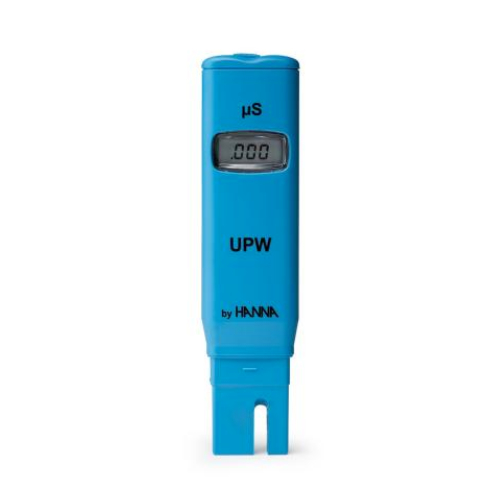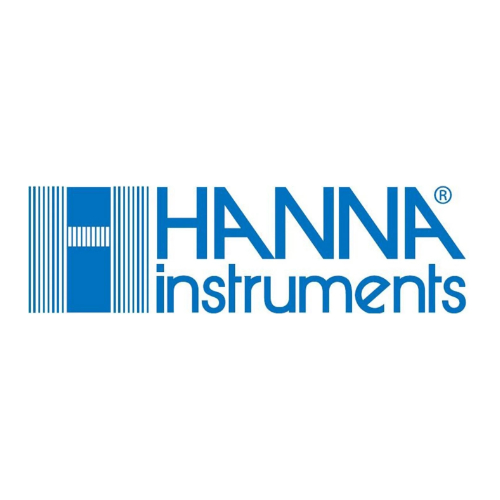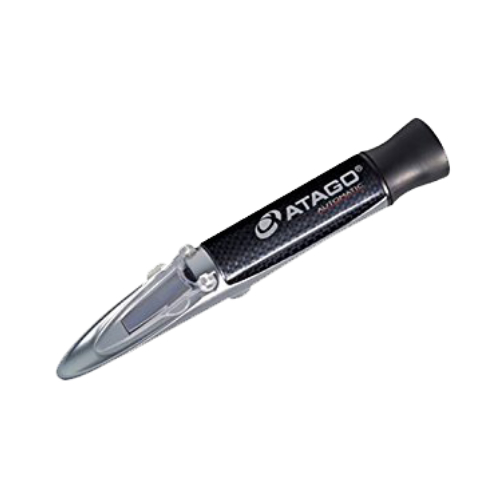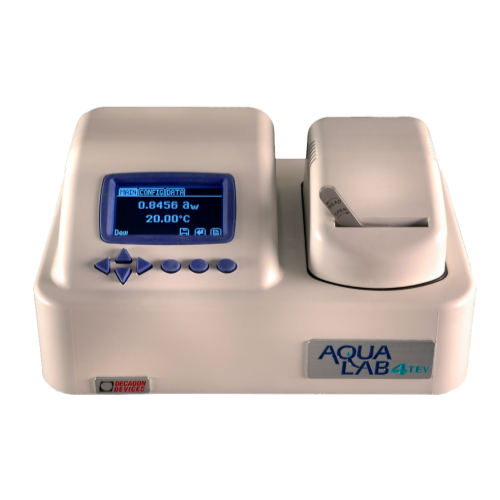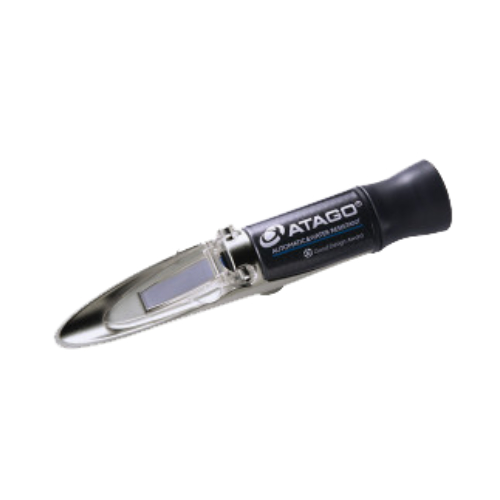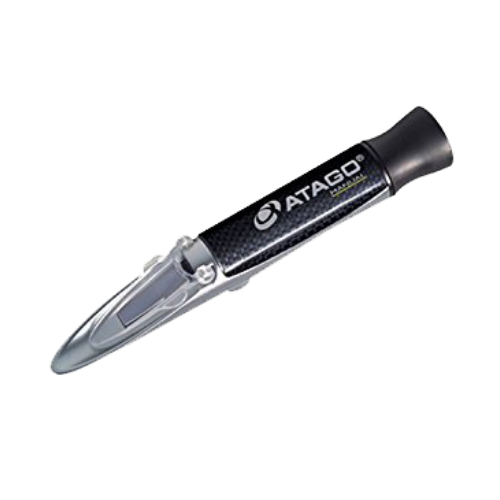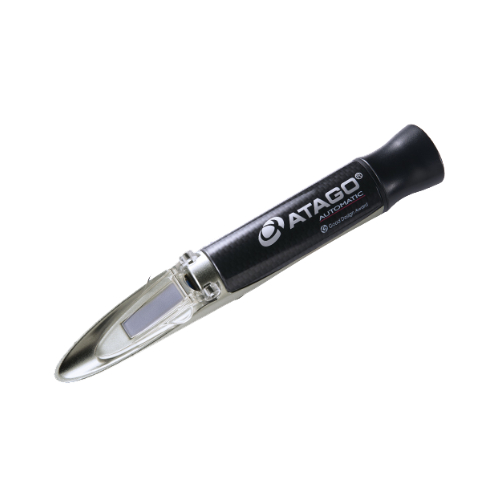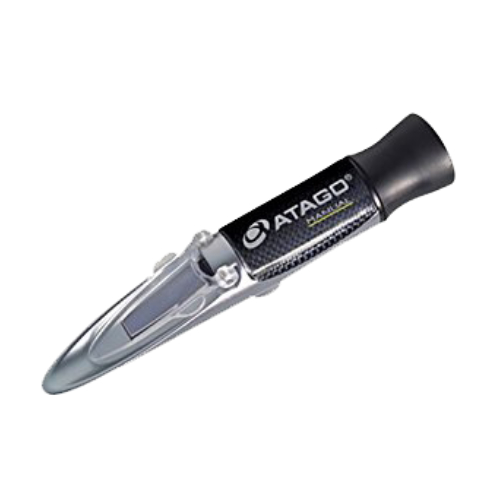Ultra Pure Water (UPW) Tester
HI98309
Description
The HI98309 UPW is the first pure water tester/conductivity meter to measure in 1/1000ths of micro-Siemens and provides on-the-spot and fast checks for minute traces of contamination in your water, assuring high quality of finished products in processes. A rugged, pocket-sized tester that features graphite electrodes to reduce polarization effects. The HI98309 comes already calibrated, done with freshly prepared low-conductivity solutions in factory due to the high instability of calibration solutions in the UPW range (below 2 µS/cm).
• Accurate readings of ultra low range 0.000 to 1.999 µS/cm
• Exposed temperature sensor for fast response
• Factory calibrated
The HI98309 uses a conductometric measurement to determine the purity of water. The HI98309 Ultra Pure Water tester (UPW) enables users to check the purity of water, best suited for electronics and semiconductor industries. This tester is housed in durable casing that provides excellent protection against harsh industrial environments.
The HI98309 features an amperometric graphite electrode that provides better repeatability in measurements, since they do not oxidize. An amperometric measurement of EC is based on Ohm’s Law, I = V/R, where R depends on the distance between two pins and their surface. Oxidation changes both the distance and surface, which will affect accuracy. The non-oxidizing graphite pins are able to provide an optimal surface for accurate, dependable results. When calibration is needed, simply submerge the electrode tip into calibration solution and adjust the trimmer on the side of the tester.
Electrolytic conductivity, abbreviated as EC, is a measurement made in which electrical charges on atomic or larger sized particles in a medium are moved under the influence of a potential difference. EC is a measure of concentration however it is non-specic for ion type. An ion is a charged particle present in the solution that contributes to the current flow. Ions are formed when a salt such as sodium chloride is dissolved in water to form particles having electrical charges. Sodium chloride, separates into Na+ and Cl-. This is a simplified denfinition for the measurement is affected by many things such as the type of ionic compound(s) dissolved in the water; the ions mobility, the solution viscosity, temperature as well as concentration.
Electrical conductance, the ability of a substance to conduct an electrical current is the reciprocal of electrical resistance. “Conductance” and “Resistance” depend on the geometrical dimensions of the substance being measured. Conductivity and resistivity are “normalized” terms that are used to denote a bulk intrinsic property of a substance. This is the measurement a standardized EC probe on a Conductivity or resistivity meter provides. Conductivity measurements can be used to provide additional industry specific measurements; TDS, Salinity and USP compliant conductivity. Many of Hanna’s meters provide these measurements also.
Features at-a-glance:
Arrives pre-calibrated
• Factory-calibrated with freshly prepared low-conductivity solutions
Exposed Temperature Probe
• Fast response to changes in sample temperature
Graphite electrode
• Reduced polarization effects
General Meter
| Battery Type / Life : | 1.5V (4) / approximately 200 hours of continuous use |
|---|---|
| Environment : | 0 to 50°C (32 to 122°F); RH max 95% non-condensing |
| Dimensions : | 175 x 41 x 23 mm (6.9 x 1.6 x 0.9’’) |
| Weight : | 95 g (3.4 oz.) |
| Ordering Information : | HI98309 is supplied with protective cap, batteries and instructions. |
| Warranty : | 1 year |
EC/TDS
| EC Range : | 0.000 to 1.999 µS/cm |
|---|---|
| EC Resolution : | 0.001 µS/cm |
| EC Accuracy : | ±2% F.S. |
| EC Calibration : | Factory calibrated |
Order now
To make your order, please contact us at info@polyscientific.com.my or call us at +6 06 3350 690

